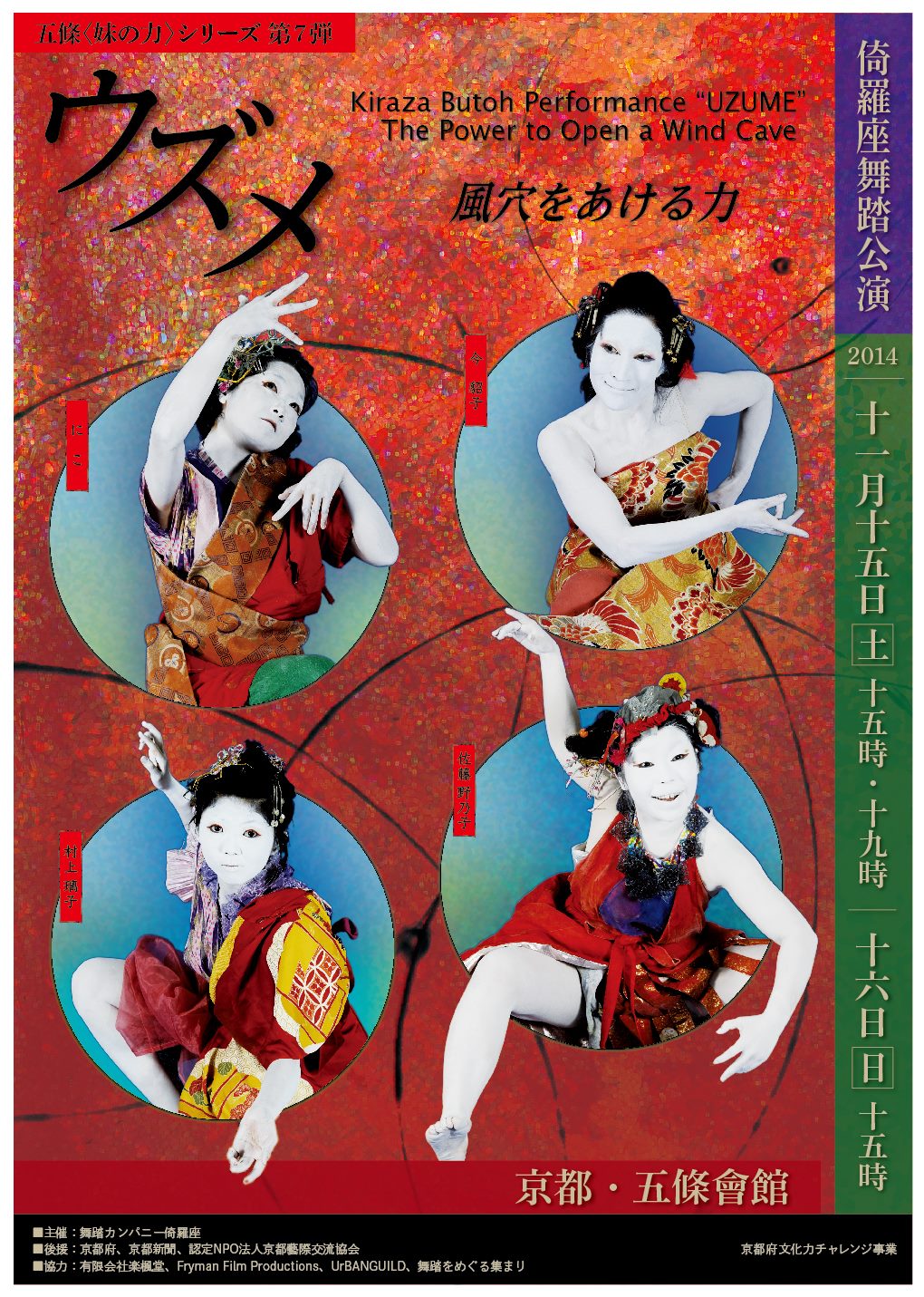I participated in Ima sensei’s butoh workshop this semester. This experience was a whole new experience for me. I had some theater and dance related experience before but what I had was backstage work, such as theater management, stagecraft, and community arts theory etc. The butoh workshop was my first time moving from backstage to front stage after quitted dancing when I was a fourth grader, to learn practicing arts as a real artist instead of being a supportive staff. The workshop was also a special experience because what I experienced was so different from the traditional class I read in book or from other people’s experience that there was no hierarchy in the class that no strict teacher and student relationship existed.
Ima sensei is a really nice person. The whole workshop was conducted in a comfortable environment. There was great freedom of self expression in class. We had improvisation practice every time but she never gave concrete description that she left a lot of space of imagination to us. For example, we were often asked to play “something” dancing in the air. The question of what object to play, how to play and play with what kind of emotion etc. were all left to us. The only thing she asked us to do was to relax and move slowly to feel the change of body dynamics but how slowly was also not defined. During the class, she seldom judged or corrected our dancing. The only time she explained what is right or wrong was when she expected us to explore certain things, for example the posture of a obaasan. She would make sure everyone is doing the right obaasan posture so that everyone is on the same track. Yesterday she made an interesting comment on my dancing “Maggie san’s dancing looks different from the others’. It made me remembered something (I can’t catch that part) I saw during old school days but I’ve been unable to remember what it is until I saw your dancing”. She further explained that each body is different and we have different abilities to control our body so she enjoyed observing how people manage their body differently, especially in this class where people have different background and different level of experience with performance arts.
While sharing with other people in my class about my CIP experience, especially Helen since we all took dance class in Japan, it was so interesting to see that even though we both took dancing, how our experience differed that I didn’t experience any 厳しさ of Ima sensei. I was so surprised to find that the environment of the class was similar to dancing workshop in America. I thought it was due to the nature of modern dancing where self expression is expected that the need of breaking the existed system of arts and doing something new is celebrated. Since butoh explored human body, the most natural way one presents is the most correct way that there’s no right or wrong.
Another reason is that butoh which has a history of merely 70 years is still under development. Tons of unknown things are still under research that it’s important to keep learning and being humble. This point is further illustrated by the way of talking in class. While talking to sensei, we all used ます form most of the time but not keigo, including pro dancers. Sensei used short forms most of the time. The way we called her also differed a lot. I called her Ima sensei and there were people calling her Ima san, Tenko san etc. I asked her how she thought of the use of language, she said that should be the way you talk to 年配の人 and she didn’t mind how people call her. Talking to elderly with respect shows good manner is 当たり前 in Japan. It’s interesting she put herself as a person with more experience because she is older instead of being a sensei with more experience and more professional. I guess it was because of the nature of her work which involved observation and learning from other people with different backgrounds a lot where she didn’t have to fully establish her status as a sensei who makes no mistakes and controls the class.
Taking Ima sensei’s workshop was one of the best things of the semester. It was good to exercise every week while learning what my body can do and experience how modern arts in Japan is like. I truly recommend Ima sensei’s butoh workshop to anyone who has interest in modern Japanese arts.

